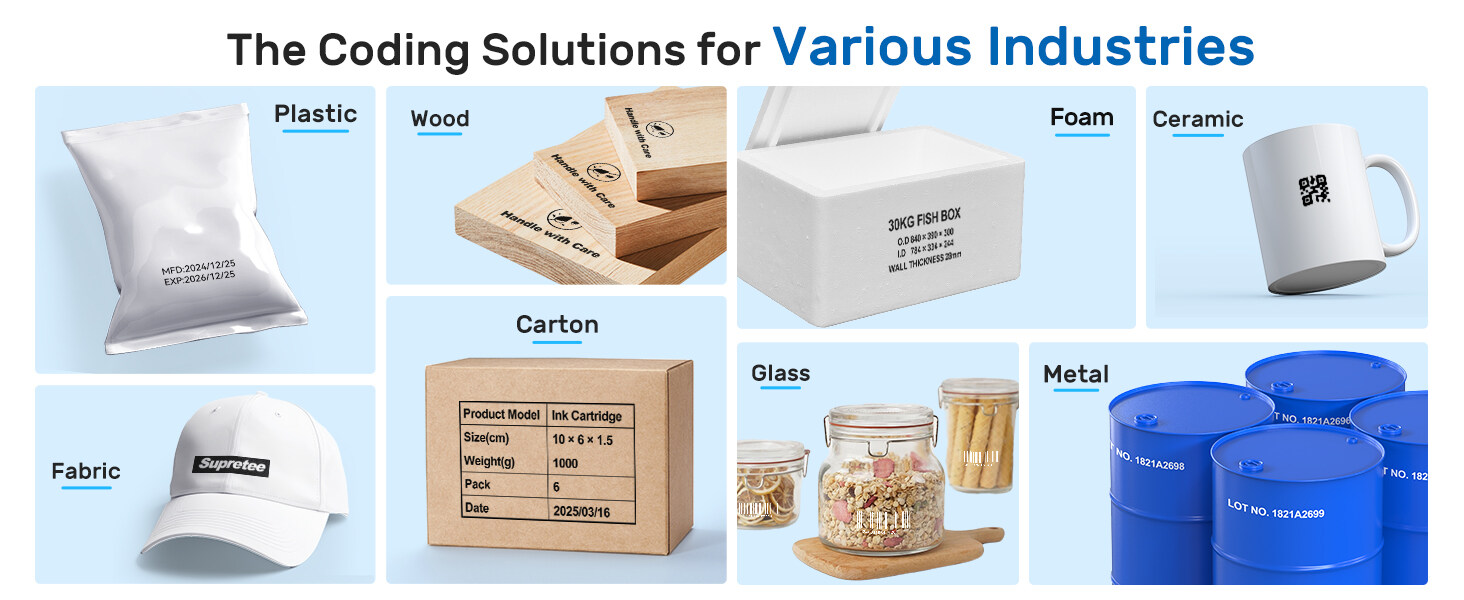The Ultimate Guide for Logo Printing: How to Print Logos On Anything Using a Handheld Printer
Printing logos and marks on raw materials or finished products has become simpler with the latest printing technology. No longer do you need to rely on large, stationary equipment or specialized printing services. Portable logo printer, also called handheld printer, is compact and portable device that offers a convenient solution for on-the-spot branding. These devices allow businesses to print high-quality logos directly onto a variety of materials, providing flexibility and efficiency for any production line.
Before Printing
Before starting logo or mark printing with a handheld printer, ensure your logo file is in a supported format like JPG, PNG, or BMP, and that its dimensions align with the printer's pixel requirements. Additionally, check the materials you’ll be printing on and prepare the appropriate ink type to match your application needs.
What Surfaces Can Be Printed on?
Handheld printers are versatile tools that can print on a wide range of surfaces, including:
- Non-porous surfaces: Glass, metal, plastic, ceramics, glass, aluminum, etc.
- Porous surfaces: Paper, cardboard, wood, and textiles.
Always ensure the surface is clean and dry before printing for the best results.

Which Inks Are Supported and How to Choose?
1. What Inks Can Be Used
Handheld printers typically support quick-drying solvent inks for non-porous materials and water-based inks for porous surfaces. Some printers also offer specialty inks like UV or pigment-based ink.
2. How to Choose
- Choose by Material: Use solvent ink for smooth, non-porous surfaces like plastic or glass, and water-based ink for porous materials like paper or wood.
- Choose by Application: Consider durability and resistance requirements—quick-drying inks work well for industrial use, while standard inks suffice for simple branding needs.
By matching the right ink to your materials and application, you will achieve precise and long-lasting prints.
How to Print Your Logos in 5 steps?
Step 1: Design and Complete Your Logo or Mark
Start by creating a professional logo or mark. You can either draw it manually or use graphic design tools like Adobe Illustrator or Canva to refine your design. For businesses looking for an efficient and portable solution, the BENTSAI B2 offers excellent compatibility with a variety of logo designs, ensuring crisp and clear prints on multiple surfaces.
Step 2: Upload and Make Adjustments to Your Logo
Once your logo is ready, finalize it in a supported format such as JPG, PNG or BMP. Store the image file in a USB drive or save it to your phone album depending on the type of printer you’re using.
Once uploading the image to the printer, test the print by adjusting the size and alignment directly on the printer's interface. This ensures the logo fits perfectly on your chosen surface before printing.
Step 3: Prepare Printing Materials and Check the Printer
The material you choose must be clean and dry for optimal print quality. While the BENTSAI handheld printer doesn’t require pre-coating, some printers might need a primer for proper ink adhesion.
Additionally: If your printer hasn’t been used recently, clean the printhead to prevent clogs and guarantee a smooth print. Regular maintenance ensures consistent performance for all your printing tasks.
Step 4: Start Printing Your Logo
Follow these steps to begin printing with your handheld printer:
- Align your handheld printer on the desired area of the material.
- Using the positioning plate will be helpful for precise placement.
- Glide the printer smoothly across the surface while maintaining even pressure for a consistent output.
Step 5: Wait for the Ink to Dry and Consolidate the Print Effect
After printing, let the ink dry completely to prevent smudging. For certain materials, you may need to cure the print using heat or UV light. Applying a protective coating can further enhance durability, ensuring your logo remains vibrant and intact over time.
Conclusion
Printing your brand logo on various materials with a handheld inkjet printer is a straightforward and efficient process, whether for professional branding or personal projects. This guide has covered everything you need to know, from preparing your logo and materials to achieving precise and durable prints. With the versatility of handheld printers, you can produce high-quality results on-demand, eliminating the need for large equipment or external services. Embrace the convenience of this innovative technology to simplify your printing tasks and bring your creative ideas to life.
Ask Question
No questions and answers

